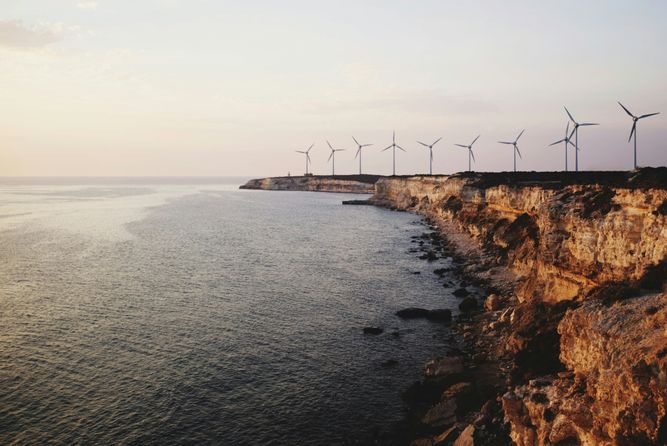Our Climate Impact
We have ambitious targets to reduce emissions in line with the 1.5°C trajectory. This involves measuring the climate impact from Kinnevik’s own operations and portfolio, as well as helping our companies to set targets in line with science and to define clear pathways to reach those targets.
Climate targets
Kinnevik has two climate targets to reduce greenhouse gas (”GHG”) emissions and to align our portfolio and organisation with a low-carbon economy:
- Reduce greenhouse gas emission intensity in Kinnevik’s portfolio by 50% in 2030, with 2020 as base year (scope 3 category 15 Investments)
- Reduce greenhouse gas emissions from Kinnevik’s operations by 50% in 2030 and by 90% in 2050, with 2019 as base year (scope 1-3 excluding category 15 Investments)
In 2024, on a fair value basis, the portfolio emissions intensity decreased by 25% year-over-year. Four portfolio companies were included in the calculation, representing 5% of Kinnevik's portfolio value per 31 December 2024. Thus, in 2024, we exceeded our target of 7% year-over-year intensity decrease. More information about methodology and included companies is available in our Climate Progress Report.
Emissions from Kinnevik’s own operations were 533 tonnes CO2e in 2019 and 418 tonnes in 2024, representing a decrease of 22%.
Greenhouse gas emissions in our own operations
(scope 1-3 excluding category 15 Investments)
Kinnevik’s emissions during 2020 and 2021 were materially lower than other years due to a sharp decrease in business travel as a result of the Covid-19 pandemic. In 2023, we increased the scope of reporting for the category Purchased goods and services and Business travel to include, for example, IT equipment and more types of food and travel. In 2024, we increased the scope further and restated the data for said categories also for 2020-2023 to provide complete reporting across all categories included in 2024. We aim to continue developing our reporting going forward.
| Kinnevik’s GHG emissions (tonnes CO2e) | 2020 | 2021 | 2022 | 2023 | 2024 |
|---|---|---|---|---|---|
| Scope 1 - Total | 11.7 | 5.3 | 7.7 | 4.4 | 7.1 |
| Company-operated vehicles | 11.7 | 5.3 | 7.7 | 4.4 | 7.1 |
| Scope 2 - Total | 4.8 | 5.5 | 3.2 | 4.8 | 0.1 |
| Energy | 4.8 | 5.5 | 3.2 | 4.8 | 0.1 |
| Scope 3 - Total | 78.2 | 109.4 | 386.1 | 353.5 | 410.7 |
| Company-operated vehicles | 2.7 | 2.0 | 2.4 | 1.3 | 1.7 |
| Energy | 1.4 | 1.3 | 0.8 | 4.2 | 6.7 |
| Purchased goods and services | 4.4 | 23.2 | 53.7 | 71.9 | 119.9 |
| Business travel | 69.7 | 82.9 | 318.6 | 270.7 | 280.0 |
| Employee commuting | 0.0 | 0.0 | 4.0 | 4.6 | 2.4 |
| Upstream leased assets | 0.0 | 0.0 | 0.2 | 0.1 | 0.0 |
| Downstream leased assets | 0.0 | 0.0 | 6.5 | 0.7 | 0.0 |
| Total | 94.7 | 120.2 | 397.0 | 362.7 | 417.9 |
| Per FTE | 2.4 | 3.0 | 8.8 | 7.9 | 8.9 |
| Per square metre office space | 0.1 | 0.2 | 0.3 | 0.3 | 0.3 |

Climate Progress Report
In this report we follow up on the fulfilment of Kinnevik's GHG emissions intensity target for the portfolio.Climate progress report 2024
Climate-related Financial Disclosures
Adopting the recommendations of the Task Force on Climate-related Financial Disclosures (TCFD) enables us to identify, assess, and manage our most significant climate-related risks and opportunities. Discover how Kinnevik and our portfolio may be impacted under different future climate scenarios in our latest TCFD report.


